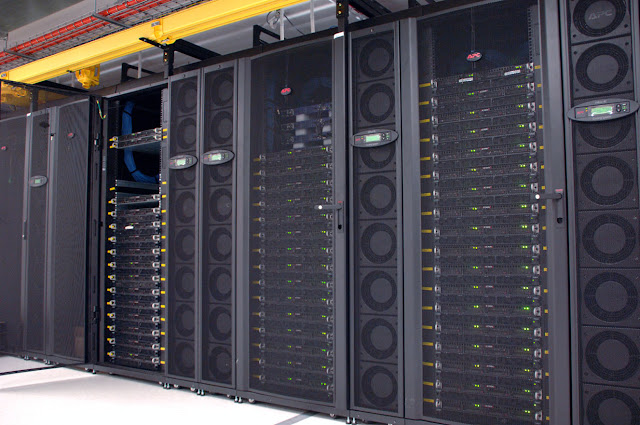By Brett Winterford
Nov 23, 2009 12:23 AM
Tags: csiro | gpu | nvidia | teraflops | supercomputer | cluster
Nov 23, 2009 12:23 AM
Tags: csiro | gpu | nvidia | teraflops | supercomputer | cluster
Uses GPU cluster to trump machines twice its size.
The CSIRO is expected to this week announce the launch of a new supercomputer, which uses a cluster of GPUs (graphical processing units) to gain a processing capacity that competes with supercomputers over twice its size.The supercomputer is one of the world's first to combine traditional CPUs with the more powerful GPUs.
According to the updated CSIRO website it has 128 Dual Xeon E5462 Compute Nodes (i.e. a total of 1024 2.8GHz compute cores) with 16 GB or 32 GB of RAM, 500 GB SATA storage and DDR InfiniBand interconnect. And it has 64 Tesla S1070 - 256 GPUs with 61440 streaming-processor cores.
The supercomputer has 144-port DDR InfiniBand Switch and an 80 Terabyte Hitachi network attached storage file system.
The CSIRO said the supercomputer 's NVIDIA-based GPU technology can increase the speed of its scientific data crunching by a factor of between 10 and 100.
The CSIRO claimed the system boasted processing capacity of some 200+ teraflops (i.e. over 200 trillion floating point calculations per second), which would appear on face level to be greater than the 140 teraflop-capablesupercomputer announced by the Australian National University last week.
But the CSIRO concedes that these stats can't be taken on a like-for-like basis - the CSIRO supercomputer is 256 Teraflops of "single precision" (32-bit) computing performance, while the ANU machine is 140 Teraflops of"double precision" (64-bit) computing performance.
The CSIRO has more information on the GPU cluster here.
Stay tuned for more on the new supercomputer in this afternoon's edition ofiTnews.
The original version of this story working on pre-release information from the CSIRO incorrectly said that the supercomputer would have 100 Intel Xeon CPU chips and 50 Tesla GPU chips. The error was corrected in this version.
Inside the Datacentre pod with CSIRO GPU Cluster.
CSIRO GPU Cluster racks during installation, front view
CSIRO GPU Cluster racks during installation, front view
CSIRO GPU Cluster compute nodes
CSIRO GPU Cluster racks during installation.
CSIRO GPU Cluster racks during installation.
Datacentre pod with CSIRO GPU Cluster.
CSIRO GPU Cluster compute nodes Infiniband cabling and patch panel.
CSIRO GPU Cluster Hitachi data storage, front view
CSIRO GPU Cluster Hitachi data storage, rear view.
CSIRO GPU Cluster Hitachi storage controllers (HNAS)
Cluster Communication rack patch panels.


.jpg)







.jpg)















